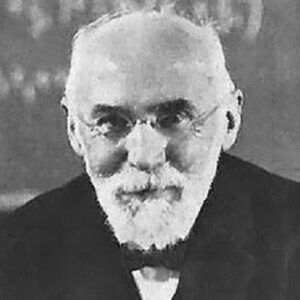Hendrik Lorentz was a Dutch physicist who made ground-breaking findings that paved the way for a lot of future research in various fields of physics. The electromagnetic element in light transmission was one of Lorentz’s most important hypotheses, as was his theoretical explanation of the Zeeman Effect, which was discovered by his fellow Dutch scientist Pieter Zeeman. For his discovery on the Zeeman Effect, Lorentz shared the Nobel Prize in Physics with Pieter Zeeman, and he went on to earn numerous additional awards in the field of science. Lorentz spent his whole academic career at his alma mater, the University of Leiden, and despite numerous offers from other universities, he declined to teach at any of them. Lorentz’s career was not solely dedicated to the pursuit of new physics discoveries; he also strove to do his part for society, and after the First World War, he attempted to use the experience of scientists to find solutions to people’s everyday difficulties. Lorentz is well known for being the scientist whose work was used by Albert Einstein to develop his famous Theory of Relativity.
Childhood and Adolescence
On July 18, 1853, Hendrik Lorentz was born in Arnhem, Netherlands, to Gerrit Frederik Lorentz and Geertruida van Ginkel. Lorentz’s father, Gerrit, owned a thriving nursery in the city. Lorentz’s mother died while he was only four years old.
Hendrik Lorentz enrolled in the Hogere Burger School in his hometown of Arnhem when he was 13 years old. At school, he excelled in the sciences and had excellent scores. In order to be eligible for university, he completed his study in classical languages in 1870.
Hendrik Lorentz enrolled at the University of Leiden in 1870 and received a Bachelor of Science degree with a specialization in Mathematics and Physics a year later. Lorentz returned to his hometown of Arnhem, where he worked as an evening school teacher while continuing his thesis study on light reflection and refraction.
Lorentz submitted his thesis in 1875 and received his degree the following year. His thesis was titled ‘on the reflection and refraction of light,’ and it expanded on Maxwell’s electromagnetic theory.
Career of Hendrik Lorentz
Hendrik Lorentz distinguished himself as one of the most talented young scientists in the Netherlands at the time, and after studying and working as a PhD researcher at the University of Leiden, he was named chair of theoretical physics at his alma mater in 1877. At the time, he was only 24 years old.
Hendrik Lorentz delivered his debut lecture at the University of Leiden in 1878, on the topic of “molecular theories of physics.”
Lorentz was elected to the Royal Netherlands Academy of Arts and Sciences in 1881. Lorentz worked on electromagnetic theories, as well as relativity and electron theory, for two decades.
Hendrik Lorentz worked on the electromagnetic phenomenon in relation to light propagation from 1892 onwards, and his theories contained something that had never been done before: the use of the term ‘local time’ to denote a time variable. Albert Einstein eventually utilized these findings in his theory of special relativity.
Pieter Zeeman, Lorentz’s former student and colleague scientist, approached him in 1896 seeking guidance on his spectral line study, which became known as the Zeeman Effect. Lorentz was a key figure in developing the theoretical explanation for the Zeeman Effect, and six years after commencing work on it, he and Zeeman shared the Nobel Prize in Physics in 1902.
Lorentz was unable to devote enough time to research due to his employment as a professor, and he resigned in 1912. He obtained a job as curator at Teylers Museum in Haarlem, but continued to lecture at the university once a week.
Following the end of World War I, Lorentz attempted to apply the scientific acumen of the members of the Royal Netherlands Academy of Arts and Sciences to practical concerns. The venture was a flop.
Major Projects of Hendrik Lorentz
Hendrik Lorentz was a pioneer in the field of physics, developing some of the most influential theories in the field. The theoretical explanation of the Zeeman Effect, for which he was given the Nobel Prize in Physics in 1902, was his most important accomplishment.
Achievements & Awards
In 1902, he was awarded the Nobel Prize in Physics for his work on the Zeeman Effect.
Lorentz was given the Rumford Medal by the Royal Society in 1908.
He received the Franklin Medal in 1917 and the Copley Medal the following year.
Personal History and Legacy
In the year 1881, Hendrik Lorentz married Aletta Catharina Kaiser. A son and two daughters were born to the couple.
Hendrik Lorentz died on February 4, 1928, in Haarlem, at the age of 74, following a month of illness.
Estimated Net Worth
Hendrik is one of the wealthiest physicists and one of the most well-known physicists. Hendrik Lorentz’s net worth is estimated to be $1.5 million, according to Wikipedia, Forbes, and Business Insider.


